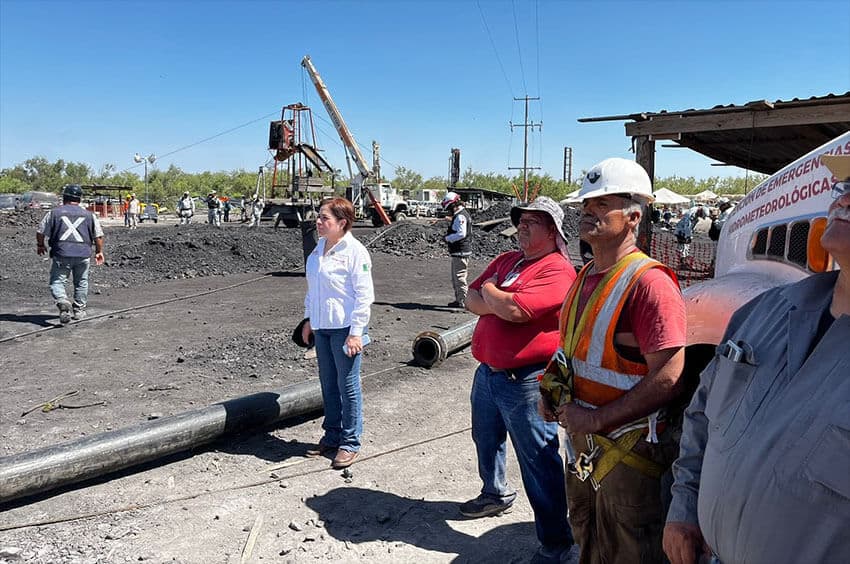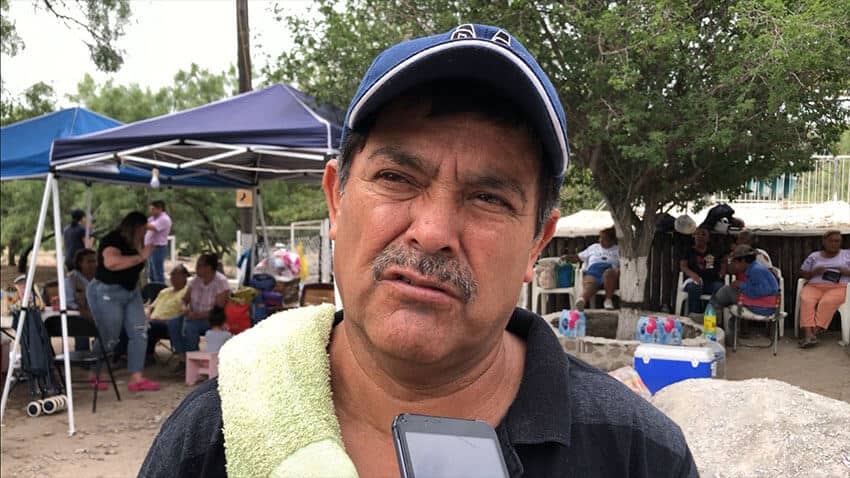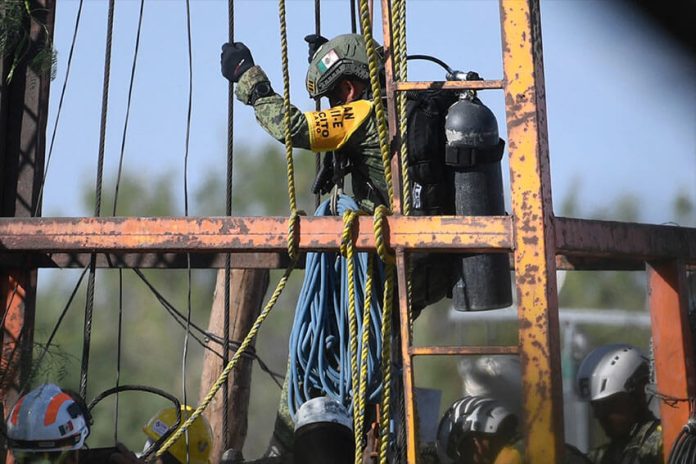Army divers on Wednesday entered a flooded coal mine where 10 miners have been trapped since August 3, but their rescue efforts were impeded by obstacles blocking access to the area where the men are located.
The miners have now been trapped in the El Pinabete mine in the Coahuila municipality of Sabinas for over a week. The mine, which flooded when excavation work caused a tunnel wall to collapse, only began operating in January. Authorities haven’t established whether the men are still alive.
On Wednesday, army divers entered and exited the mine on several occasions via a 60-meter shaft leading to one of its wells. One of the divers subsequently reported that tunnels leading to the part of the mine where the miners are located are blocked with wood and rocks.
“We can’t get in, [access] is blocked. It’s completely collapsed,” he said.

Coahuila Governor Miguel Riquelme acknowledged his remarks in a Twitter post, writing that “one of the divers who went down to Well No. 4 explained that there are still obstacles to entering” the part of the mine where the miners are located.
“The pumping work will continue so that they can enter again and continue with the search and rescue,” he said.
Family members of the trapped miners, who have set up a camp at the mine site, were left disappointed by the lack of progress in the rescue mission. Some burst into tears when they heard about the impediment the divers faced, the newspaper Reforma reported.
However, the families are still holding out hope that the men will be found alive, although they know that that possibility diminishes with each passing minute.
“It’s been a very long, very painful, very nerve-wracking wait,” Magdalena Montelongo Pérez, sister of one of the missing miners, told the newspaper El Universal.
She praised the work of the rescue teams and stressed that her family still has hope that the miners will be found alive.
Montelongo said her brother, Jaime Montelongo, had retired but decided to go back to work because he still felt up to the job in a physical sense.
“He knew of the risks and dangers,” Montelongo said. “… He used to say, ‘one goes down [to the mine] … but he doesn’t know whether he’ll return.’”

Plutarco Ruiz Loredo, a former miner who was trapped in a flooded Coahuila mine for seven days 12 years ago, was at the El Pinabete mine last week because his granddaughter’s husband is one of the 10 trapped miners.
“I hope they had the opportunity I had [to go] to a high part” of the mine, he told El Universal. “… I hope they had time to take shelter [from the water].”
Ruiz said that all miners know they have to get to a high part of the mine when a flood occurs. He also said that it’s almost certain that miners will be involved in an accident at some stage of their career. “It’s very risky work,” Ruiz said.
Last week’s incident at the El Pinabete mine occurred just over a year after a mine was flooded in the neighboring municipality of Múzquiz, where seven miners were trapped, all of whom died.
Sixty-five miners died in an explosion at another Coahuila coal mine in 2006. Only two bodies were recovered after that disaster.
With reports from Reforma and El Universal
